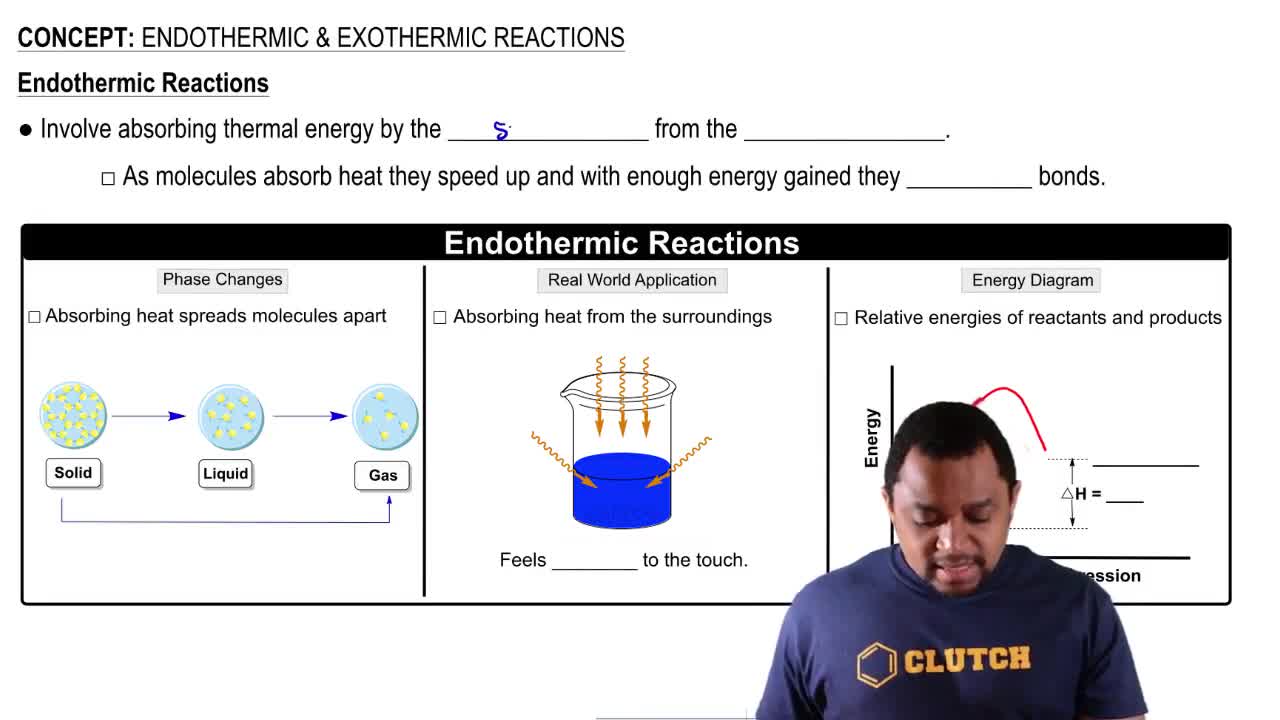Here are the essential concepts you must grasp in order to answer the question correctly.
Endothermic Reactions
Endothermic reactions absorb heat from their surroundings, resulting in a decrease in temperature of the environment. The enthalpy change (ΔH) for these reactions is positive, indicating that energy is required for the reaction to proceed. Understanding this concept is crucial for evaluating the conditions under which such reactions may occur spontaneously.
Recommended video:
Endothermic & Exothermic Reactions
Gibbs Free Energy
Gibbs Free Energy (G) is a thermodynamic potential that helps predict the spontaneity of a reaction at constant temperature and pressure. The change in Gibbs Free Energy (ΔG) is calculated using the equation ΔG = ΔH - TΔS, where ΔS is the change in entropy. A reaction is spontaneous when ΔG is negative, which can occur under certain temperature conditions for endothermic reactions.
Recommended video:
Gibbs Free Energy of Reactions
Entropy and Temperature
Entropy (S) is a measure of the disorder or randomness in a system. For endothermic reactions, an increase in temperature can enhance the entropy term (TΔS) in the Gibbs Free Energy equation, potentially making ΔG negative. Thus, understanding the relationship between temperature, entropy, and spontaneity is essential for determining when an endothermic reaction may occur spontaneously.
Recommended video:
Entropy and Physical Changes





